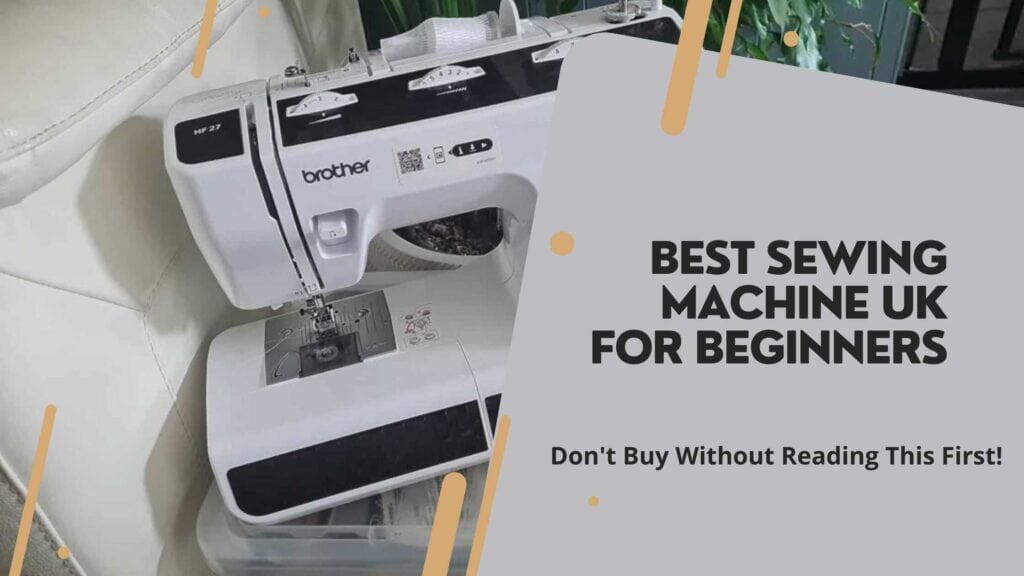When it comes to buying the best sewing machine for beginners in the UK, the choices can feel overwhelming, especially if it’s your first time or you’re replacing an older machine. I’ve been there too, unsure about which model to pick and worried about wasting money on the wrong choice.
To help, I unboxed several sewing machines and spent weeks—sometimes months—testing them under various conditions to understand what makes a machine truly beginner-friendly. My goal is to save you time and frustration while ensuring you find a machine that meets your needs.
Whether you’re looking to start a new hobby, repair clothes at home, or create unique handmade items, having the right sewing machine is crucial. For beginners, a reliable, easy-to-use machine can make all the difference in mastering basic skills while enjoying the process. I quickly learned that investing in a high-quality sewing machine is more about long-term benefits than the initial price tag. A dependable machine from a trusted brand ensures smooth performance and fewer technical hiccups, helping you focus on your craft rather than troubleshooting issues. For added confidence, consider finding top independent retailers in your area through the Sewing Machine Trade Association.
“Sewing isn’t just a practical skill—it’s also therapeutic.” Experts like Debbie Shore, author of Sewing Room Secrets, describe it as liberating, helping you forget daily worries as you immerse yourself in the creative process. Wendy Ward, a well-known sewing blogger, agrees that the “focus required in sewing can be incredibly calming. With the right machine, you’ll not only learn the fundamentals but also discover the joy of crafting high-quality pieces.”
In this guide, I’ll share the best options for every budget, from entry-level sewing machines to those suited for more advanced users. Whether you’re on a tight budget or want something professional, these recommendations will help kickstart your sewing journey.
Best Sewing Machine UK For Beginners At A Glance
| Beginners Sewing Machine | Buyer Satisfaction Ratings | Reason To Buy |
|---|---|---|
| Uten Computerised | 90% | Affordable and feature-packed for beginners |
| Singer 4223 (Must Buy) | 94% | Reliable, durable, and highly trusted by buyers |
| Necchi Q132A | 82% | Compact, lightweight, and beginner-friendly |
| Embroidery Machine | 94% | Ideal for embroidery enthusiasts with ease of use |
| Brother HF27 | 90% | Versatile, durable, and offers great stitch range |
| Janome 725S (Must Buy) | 96% | High performance, durable, and beginner-friendly |
Exploring The Right Kind of Sewing Machine UK For Beginners
When I was choosing a sewing machine for beginners, I quickly realized how important it is to think long-term. A high-quality home sewing machine should last for years, so it’s worth considering not just what you need now but also your future goals. Trust me, it’s better to invest in the right machine from the beginning rather than regret a hasty choice later.
Becca Porter, wholesale coordinator at Sew Over It, emphasizes that when it comes to sewing machines, the saying “buy low, buy twice” holds true—investing in quality pays off.
I found that reliable machines from big brands like Janome or Brother don’t come cheap—especially not under £99. It’s tempting to go for a bargain, but a cheap sewing machine often struggles with tougher tasks. For example, if you need to sew thick curtains or denim, a lightweight model simply won’t cut it. It’s important to choose a machine that’s fit for purpose, not just loaded with features you may not actually use.
I also learned to match the machine to the fabric I’d be working with. For thick textiles, a sturdy machine with a long stitch length, good needle penetration, and adjustable presser foot pressure is a must. It also helps if the machine is heavy enough to stay stable during use.
For stretch textiles, I recommend a top-loading machine. It’s great for stretchy fabrics like knits, and most high-quality sewing machines come with built-in stretch stitches that make this type of sewing a breeze.
Lastly, for light textiles like silks and satins, adjustable presser foot pressure is essential. Without it, the fabric can get marked by the feed dogs. This is one feature I always check before deciding on a machine.
Moving further, there are three main types of control used: mechanical, computerized, and touchscreen. Each one offers a different experience, and it really comes down to personal preference.
I started with a mechanical sewing machine, which is a great choice for beginners. It’s simple and easy to use, especially if you don’t need a lot of fancy features. The flywheels and dials are easy to understand, and you usually get up to 20 built-in stitches. You can adjust things like stitch length and tension with the dials, which makes it perfect for basic projects.
Next, I tried a computerized sewing machine, which is great for beginners who want to explore more stitching options. It offers a variety of pre-programmed stitches and usually has buttons or dials to select the stitch. It also comes with extra features like lock stitches or an automatic cutter, making it more versatile for different projects.
Lastly, I experimented with a touchscreen sewing machine. The touchscreen makes stitch selection much simpler and quicker, which I found especially useful for beginners. Some models even come with built-in apps for specific projects like quilting, which made sewing much more enjoyable. The screen size and clarity were important for me, as I wanted something easy to read and navigate.
Machine Size, Workspace, and Weight
For me, the size of the machine made a big difference. Smaller machines are great if you have limited space or only work on basic tasks as beginner, but they can feel restrictive for bigger projects. On the other hand, larger machines take up more room but are perfect if you need versatility.
Moving further, I found that the machine’s workspace—like the neck area and extension table—really impacts what you can work on. For basic sewing, a small workspace might be fine, but for bigger projects, having at least 8–9 inches or an extension table is a game-changer. I now always check workspace dimensions to make sure they fit my sewing plans.
The weight of the machine was another big factor for me. If you need to move it around, like taking it to sewing classes, a lightweight machine is ideal. But heavier machines often feel more stable when you’re working. Personally, I went for something in the average weight range—it’s portable but still feels sturdy enough for my projects.
Best Sewing Machine UK For Beginners- Tried And Tested Models
Why you can trust Cheap Near Me UK: Our expert reviewers spend hours testing and comparing products and services so you can choose the best for you. Find out more about how we test.
Uten Computerised Sewing Machine
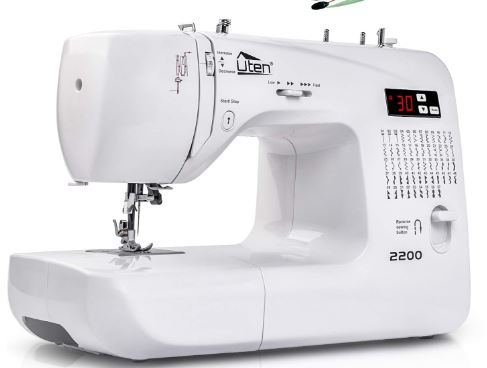
The Uten Computerised Sewing Machine has been a game-changer for me as a beginner in sewing. When I first unboxed it, I was impressed with the thoughtful design and all the accessories neatly included. Setting it up was simple, and within a few hours, I was testing its features.
Over the weeks, I’ve found this machine incredibly versatile. The 60 built-in stitches give so many options, from basic to decorative, and it handles fabrics smoothly. I’ve sewn patches onto a denim jacket and worked on a memory blanket, and the results were outstanding. Using the right needle and tension, it handled thicker fabrics like denim effortlessly. This machine is also remarkably quiet, making long sewing sessions much more enjoyable.
One feature that stands out is the automatic needle threader—it’s a lifesaver and such a time-saver compared to my previous machines. The speed control is another favorite of mine. Starting on the slower settings helped me get comfortable, and now I adjust the speed depending on the project. It’s such a flexible feature, especially for beginners like me.
This machine also makes learning easy, thanks to the handy YouTube tutorials available. Even as a complete beginner, I found it straightforward to navigate. The bobbin system took a bit of practice at first, but once I got used to it, threading and replacing it became second nature.
For its price, the Uten Computerised Sewing Machine is excellent value. It’s not just affordable but also reliable and packed with features that beginners will appreciate. If you’re new to sewing and want a dependable, easy-to-use machine that can grow with your skills, I highly recommend it.
Singer
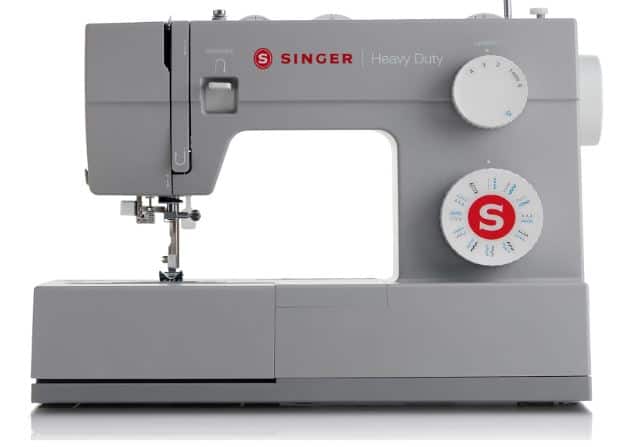
When I unboxed the Singer 4423 Sewing Machine, I immediately noticed its sturdy build and thoughtful design. After testing it over weeks, I can confidently say this is one of the best sewing machines for beginners in the UK. It’s reliable, easy to use, and packed with features that make sewing enjoyable.
Threading the machine was straightforward, and the automatic needle threader is such a time-saver. Within minutes, I had it set up and was experimenting with different stitches. The instruction manual is clear and concise, which made learning the machine’s functions a breeze. I appreciated that the manual was entirely in English, so I didn’t waste time flipping through unnecessary pages.
See picture below of unboxing testing experience.
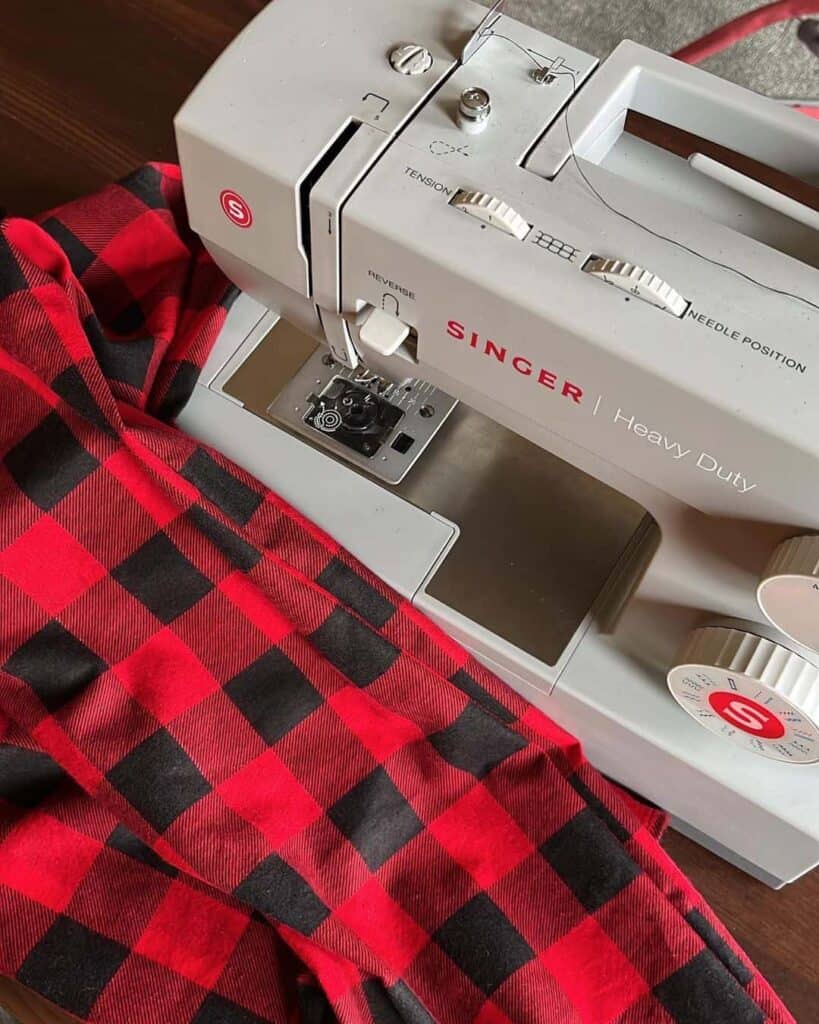
What impressed me the most was its powerful motor and ability to handle various fabrics. I’ve used it on soft materials for small projects and even heavier fabrics like canvas and denim. With the right needle and settings, it performed flawlessly without any hesitation. The stitch speed and consistency were a delight, making it feel much more advanced than its price suggests.
The Singer 4423 is also surprisingly lightweight for its robust construction. I found the metal parts add to its durability, and the few plastic components don’t compromise its performance. Whether I was creating buttonholes or experimenting with the invisible hem stitch, everything worked smoothly.
This machine is perfect for both beginners and experienced users. For a beginner like me, it’s an excellent starting point, and its features leave plenty of room to grow. The additional app is a bonus, providing extra guidance and tips, especially for those just learning.
Overall, if you’re looking for an affordable, versatile, and durable sewing machine, I highly recommend the Singer 4423. It’s exceeded my expectations, and I’m thrilled with the results of every project I’ve worked on so far. This is a sewing machine worth investing in!
Necchi
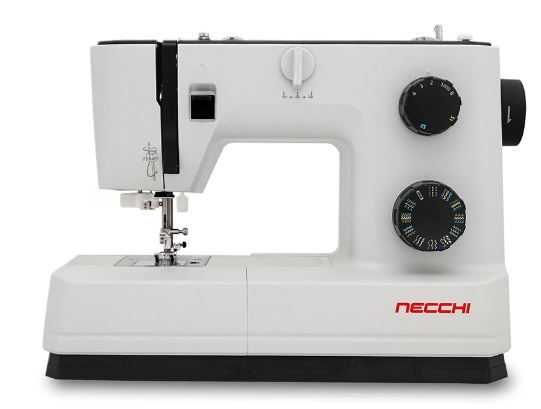
First, let’s talk about the positives. It’s clear that this machine has won over quite a few fans in the UK. Many users have praised its ability to handle heavy fabrics without breaking a sweat, which is a major plus for those of us who tackle sturdy materials. It’s portable and easy to carry, making it a practical choice for various sewing projects.
The user-friendly aspect of this machine is another highlight. Beginners have found the instructions easy to follow, which is crucial when you’re just starting your sewing journey. Once you get to know it, the machine itself is a breeze to use. It’s always a relief when a machine lives up to its promise of being beginner-friendly, and this one certainly seems to do just that.
But it’s not all sunshine and rainbows. There have been a few hiccups along the way for some users. Some experienced issues with the machine, including faults like “birds nesting” and timing problems. While these problems were disappointing, it’s worth noting that communication with the seller has been generally quick and thorough, which can make the repair process smoother.
One drawback to consider is that the machine arrived with a European plug for some users. This meant additional costs and hassles to make it suitable for UK use, which can be a bit frustrating. However, once sorted out, it appears to work well for most users.
Heavy Embroidery machine for beginners UK
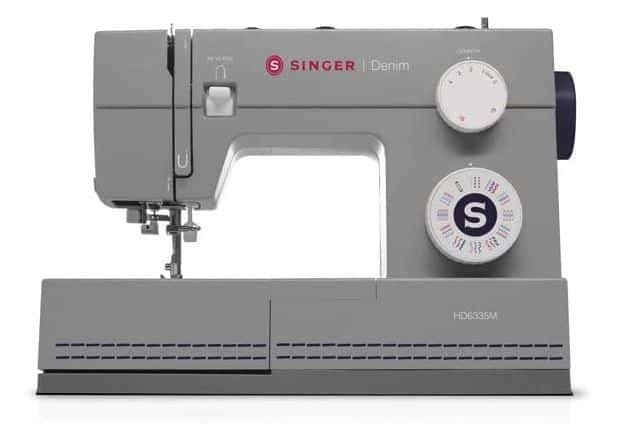
I’ve been using the Heavy Embroidery Best Sewing Machine for Beginners for a few weeks now, and I’m genuinely impressed with its performance. Right from the moment I unboxed it, I could tell this machine was built to last. It’s robust and sturdy, making it ideal for heavy-duty tasks, including sewing through thick fabrics like denim and canvas.
The machine is incredibly easy to use, even for someone with limited experience like me. The setup was simple, and I had it running in no time. I was particularly pleased with how smoothly it sews through multiple layers of fabric without any strain. It’s a true workhorse, and I can confidently say it handles thick materials effortlessly.
What I love most is how versatile the machine is for various sewing projects. Whether I’m working on quilting or embroidery, it delivers consistent, high-quality stitches every time. The machine operates at a good speed and has all the necessary features to make sewing a seamless experience. The automatic needle threading is also a huge time-saver, especially when I’m working on multiple projects at once.
I’ve tested it on different types of fabrics, and it hasn’t disappointed me. The machine glides through everything, from delicate fabrics to heavy upholstery materials. The power and precision it offers are beyond my expectations for a beginner-friendly model.
Overall, I highly recommend this sewing machine. It’s perfect for anyone looking to take on heavier fabrics without sacrificing ease of use. If you’re new to sewing or just need a reliable machine for all types of projects, this one is definitely worth considering. It has exceeded my expectations, and I’m excited to continue exploring its full potential.
Brother HF27 Good Sewing Machine UK
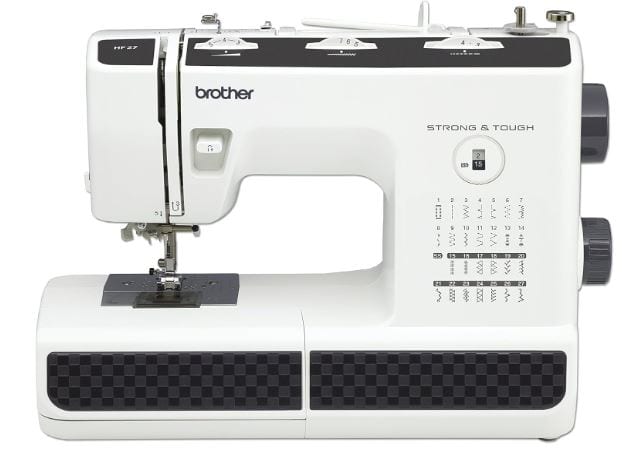
I’ve been using the Brother HF27 Best Sewing Machine for Beginners for a few weeks now, and I must say, it has completely exceeded my expectations. Right out of the box, I was impressed with how easy it was to set up and get started. The detailed DVD and paper instructions made it simple for me to begin sewing, even though I’m a beginner.
The automatic needle threader is a game-changer for me. It saves so much time and avoids any frustration with threading the needle, which I appreciate. I’ve been testing it on a variety of fabrics, from delicate satins to thicker layers like denim and upholstery, and it handles them all without any issues. The machine runs quietly and smoothly, even when sewing through multiple layers, which is a big plus in my home since I can sew without disturbing others.
See the picture of package arrival and first hand testing.
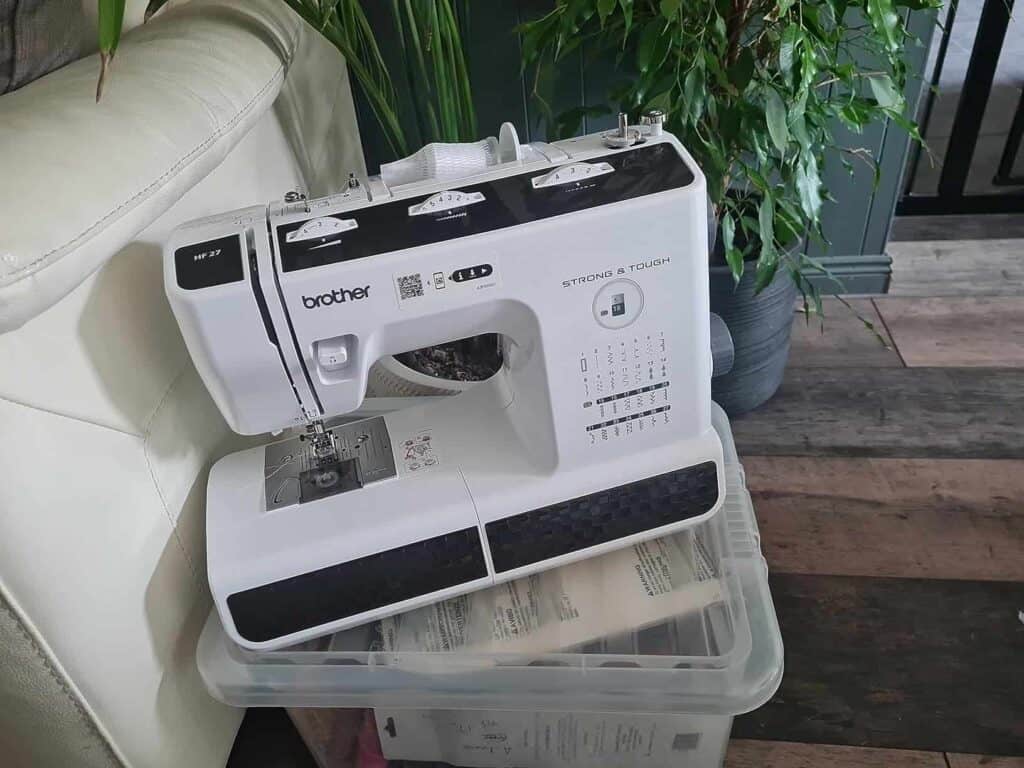
One feature I really love is the adjustable speed control. As a beginner, I can sew at a comfortable pace, which makes learning much easier. The machine also has an excellent range of stitches for different projects, and the easy-to-load bobbin is a time-saver. The fact that it’s not too heavy yet sturdy enough to stay put while sewing is a huge benefit for me, as I can easily move it around without worrying about it sliding or tipping over.
I’ve sewn various projects, and it’s been smooth sailing every time. It’s incredibly user-friendly and has the right balance of power and ease of use. Whether you’re a complete beginner or have more experience, this machine is a great investment. I’m thrilled with my purchase and would definitely recommend it to anyone looking for a reliable and efficient sewing machine for everyday use. If you’re on the fence, I highly suggest giving it a try—you won’t regret it!
Janome
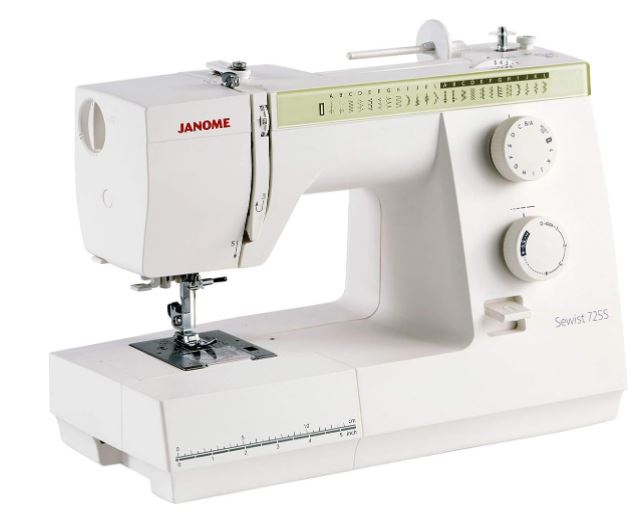
I’ve been using the Janome 725S Sewing Machine for a few months now, and I’m really impressed by how well it performs. I unboxed it with high expectations, and it has certainly lived up to them. It’s been perfect for my home sewing needs, and I can confidently say it’s one of the best sewing machines for beginners in the UK.
The automatic needle threader is an absolute lifesaver for me, especially since it saves a lot of time and hassle. I’ve sewn through different materials, including velvet and finer fabrics, and this machine handles them effortlessly. The top-loading bobbin and horizontal reel holder make threading smooth and easy, and I love that the machine is sturdy enough to prevent any unwanted vibrations, ensuring my stitches are always neat.
What really stands out for me is how quiet the machine runs. It doesn’t cause any distractions while working, making it much more enjoyable to use. The machine’s built-in buttonhole function and overcast stitch have been great for my projects, especially for dressmaking and home décor. Even with more complex tasks, like sewing multiple layers of fabric, the Janome 725S just powers through without issue.
I also appreciate the bright light that illuminates my work area, which is essential when sewing intricate patterns or in low-light environments. The machine feels solid and reliable, and I can tell it will last for years. It’s easy to carry and doesn’t feel too heavy, making it perfect for any level of sewing experience.
Overall, I’ve been thoroughly pleased with the Janome 725S. It’s not only easy to use but also offers all the features I need to take my sewing skills to the next level. I would highly recommend this machine to anyone looking for a reliable and high-quality sewing machine. If you’re a beginner or someone returning to sewing, this machine is a great choice.
How We Test Best Sewing Machine For Beginners UK
When it comes to finding the best sewing machines for beginners in the UK, our testing process is hands-on and thorough. We believe that the only way to provide reliable recommendations is by directly experiencing the machines ourselves.
We start by unboxing and assembling each sewing machine to evaluate how beginner-friendly the setup is. Clear instructions and easy assembly are key for anyone new to sewing. We also check the included accessories to ensure you’re getting good value.
Next, we spend several weeks using the machines, focusing on various sewing tasks such as stitching simple seams, sewing through multiple layers, and working with different fabrics like cotton, denim, and stretch materials. This gives us a real sense of the machine’s performance, reliability, and ease of use.
We test essential features like stitch options, buttonhole functions, and the adjustability of settings, ensuring they are intuitive for beginners. The quality of the feed system is closely observed, as smooth fabric feeding is vital for frustration-free sewing.
Durability is another important factor. We assess how well the machine handles extended use and whether it requires frequent maintenance. Quiet operation and portability are also considered, as these make a big difference in everyday use.
Finally, we compare the machines based on price, features, and overall value, ensuring there’s an option for every budget. Whether you’re looking for a basic entry-level machine or one with more advanced features, our testing ensures you’ll find a model that suits your needs.
Our hands-on approach ensures that every machine we recommend has been tested for beginner-friendliness, reliability, and ease of use, helping you make an informed decision.
What To Consider When Buying Sewing Machine For Beginners
Storage
Some machines come with detailed compartments, each space dedicated to a specific presser foot, while others don’t have any storage for supplies at all. Machines without storage compartments are usually straight-stitch only, so you won’t need multiple presser feet anyway.
One thing I found helpful was a compartment in the convertible flat bed section, which most machines have. It’s great for keeping the accessories bundled with the machine. Some machines make it easy to access this area by flipping out a section, while others require you to slide off the flat bed to reach it.
I also liked machines with an upper compartment where the most used presser feet, like the 1/4-inch or zigzag foot, are stored. These are convenient for quick changes while working. However, I’ve noticed that these spaces aren’t always the most secure, and if you travel with your machine a lot, you might risk losing your accessories.
For some machines with a lot of attachments, I found that an external accessories package is included. This was especially useful for me, as it kept everything organized when I needed to travel or had a lot of tools to manage.
Bobbin System
The type of bobbin system can really affect my stitching experience. I’ve tried both front-loading and top-loading bobbins, and each has its pros and cons.
The front-loading bobbin is something I came across on vintage machines like the Singer Featherweights. While some people prefer it, I found it a bit tricky to load. It’s hard to see the bobbin unless I lean in awkwardly, and it can get jammed more easily. However, I found that front-loading bobbins are great for sewing and embroidery because you don’t have to unload the project to change the bobbin. I noticed this type on machines like Bernina, which made it a solid choice for some specialized tasks.
Personally, I prefer top-loading bobbins, also known as drop-in bobbins. They’re so much easier to load – you just drop the bobbin in, follow the arrows to wrap the thread, and you’re ready to go. Cleaning is easier too, as I can just pop off the needle plate and brush off the dust to avoid jams. I’ve found that Janome and Brother machines, especially their computerized models, often feature this design, and it’s definitely more convenient for me as a beginner.
For even more convenience, I tried the easy set top-loading bobbin. These are super quick to load, as the bobbin drops in and the thread automatically feeds through, allowing me to get back to sewing much faster.
Right Cost of Sewing Machine For Beginners
When deciding on the right cost of a sewing machine for beginners, I found that the price you pay directly impacts the machine’s quality, features, and durability. As someone who tested different models, I realized it’s essential to match the machine’s cost with your sewing needs and skill level. Let me break it down for you.
For beginners, budget sewing machines under £250 are a great starting point. These are usually mechanical models with basic functions. They’re simple to use, which makes them perfect if you’re just learning the ropes or need something reliable for occasional repairs. While they lack advanced features, they’re a practical option for getting started without spending too much.
If you’re planning to sew regularly or explore more creative projects, machines in the £350 to £800 range offer the best balance of features and value. These models typically provide a larger workspace and more advanced capabilities, which make sewing enjoyable and efficient. They’re also built to last, so they’re worth the investment if you see yourself sewing as a long-term hobby.
For advanced sewists or professionals, top-of-the-range sewing machines above £800 are designed for heavy use and complex projects. These machines come with high-quality materials, additional accessories, and plenty of functions to handle demanding tasks. While these models are pricey, they offer excellent durability and performance, especially for large-scale stitching or intricate designs.
Choosing the right sewing machine comes down to your budget and how you plan to use it. Start with a model that suits your needs now and allows room for growth as your skills improve.
Types of Sewing Machine Feed Dogs
The feed dog system is for getting smooth and accurate stitching. It determines how fabric moves through the machine, making a big difference in handling different materials.
Machines with six or seven feed dog pieces are excellent because more points of contact mean better fabric feeding. I find they make the stitching process smoother and more precise.
I also learned about box feed systems, which move in a square motion. They stay in contact with the fabric longer, giving better control, especially for tricky materials. Adding to that, the Superior Feed System (SFS) combines box feed with seven-piece systems. This is a game-changer for smoother feeding and more contact with the fabric.
For those working on thicker fabrics or layers, walking feet are a must. These come with an extra set of feed dogs attached to the foot, ensuring consistent feeding. While you often buy them separately, they are worth considering.
Some machines have built-in systems like IDT, Acufeed, or Dual Feed. These work like a walking foot but are integrated into the machine, offering even more precise feeding. I love how these systems make working with slippery or layered fabrics much easier.
For advanced users, there’s the Bernina Stitch Regulator (BSR). It adjusts the stitch speed automatically for free-motion quilting. If you’re serious about quilting, this feature ensures consistent stitches every time.
When choosing a machine, I always consider how the feed dog system fits my needs. It’s a small detail that makes a big difference.
Feature & Accessories
I really appreciate the automatic tension feature. It lets me switch between stitches without having to adjust anything manually. While it adjusts the tension for specific fabrics like knits, I can still tweak it if needed, giving me the best of both worlds. The 1-step buttonhole feature is a lifesaver. I can just pull down the lever, place the button in the sliding foot, and the machine automatically determines the size. It’s quick and hassle-free, which I love.
Most machines, including mine, have a built-in bobbin winder. It winds the bobbin as fast as I’m sewing, but I have to thread the machine separately each time, which isn’t a big deal. For professional-level sewing, I noticed some machines have an extra motor specifically for winding the bobbin. While this isn’t necessary for me, it’s a great feature for those who sew a lot and need faster operation. I’ve also considered getting a machine with an optional embroidery module. It’s great because I can attach it when I want to do embroidery and remove it when I don’t need it, saving me space. The elongation button lets me stretch satin stitches up to five times, which is perfect for some of my projects.
The feed dogs keep the fabric moving smoothly while I sew, and the drop feed feature is essential for free-motion quilting or embroidery. I can simply flip a lever to drop the feed dogs, allowing me to control the fabric in multiple directions. The foot control lets me stay hands-free, which is very convenient. I can also adjust the foot pressure, which helps when I need to turn corners smoothly, especially with applique work. I love the free arm feature, especially for sewing around cuffs and trouser legs. The accessory box section pulls away, giving me more flexibility when working on small areas.
The hand wheel is useful for manually adjusting the needle position. I also find the knee lift incredibly helpful—it lets me lift the presser foot without removing my hands from the fabric. The LED sewing light is essential for seeing my work clearly without straining my eyes. The built-in needle threader is a huge help, as threading needles can be tricky, especially when I’m working with small, hard-to-see needles. The needle up/down button is a simple but game-changing feature. It helps me pivot fabric easily and makes starting and stopping my stitching much more precise.
The presser foot holds the fabric in place, and I love the snap-on presser foot system. It’s so easy to change the foot with just a press of a button, which saves me time. I use the reverse/reinforcement stitch to reinforce seams, and the speed limiter gives me better control over how fast I sew. It’s especially useful when I’m working on delicate fabrics or as a beginner. The stitch memory feature allows me to save my favorite stitch combinations for future use. The thread cutter is also really convenient—just a quick swipe of my hand, and the thread is cut.
FAQ: Best Sewing Machine For Beginners UK
Can I teach myself to use a sewing machine?
Yes, you can learn to use a sewing machine at any time! Online video tutorials make setup and basic techniques easy to follow. While a brand-new machine isn’t necessary, investing in one can be helpful.
Can a beginner use a sewing machine?
Absolutely! Beginners should start with a simple mechanical sewing machine rather than an electronic one. Look for features like a straight stitch presser foot, buttonhole presser foot, and zipper foot. These three attachments are essential for handling most basic sewing tasks with ease.
How to pick a sewing machine for beginners?
Choose a sewing machine that’s simple to use and beginner-friendly. Look for features like an automatic one-step buttonhole, built-in stitches, and an automatic needle threader. These make learning easier. For passionate sewers, a machine with advanced features can be a great investment to enhance your sewing journey.
Can a beginner use a computerized sewing machine?
Yes, beginners can use a computerized sewing machine. These machines are affordable, easy to use, and convenient. Whether you choose a mechanical or computerized option, focus on one that’s reliable and helps you learn the basics while offering durability and user-friendly features.
What factors should you consider before buying a sewing machine?
Consider ease of use, including the machine’s weight, threading simplicity, and the size of the bobbin and needle. Budget is important too, as sewing machine prices range from a few hundred to several thousand pounds. Choose a machine that balances your needs and budget for the best sewing experience.
Related Resources:


